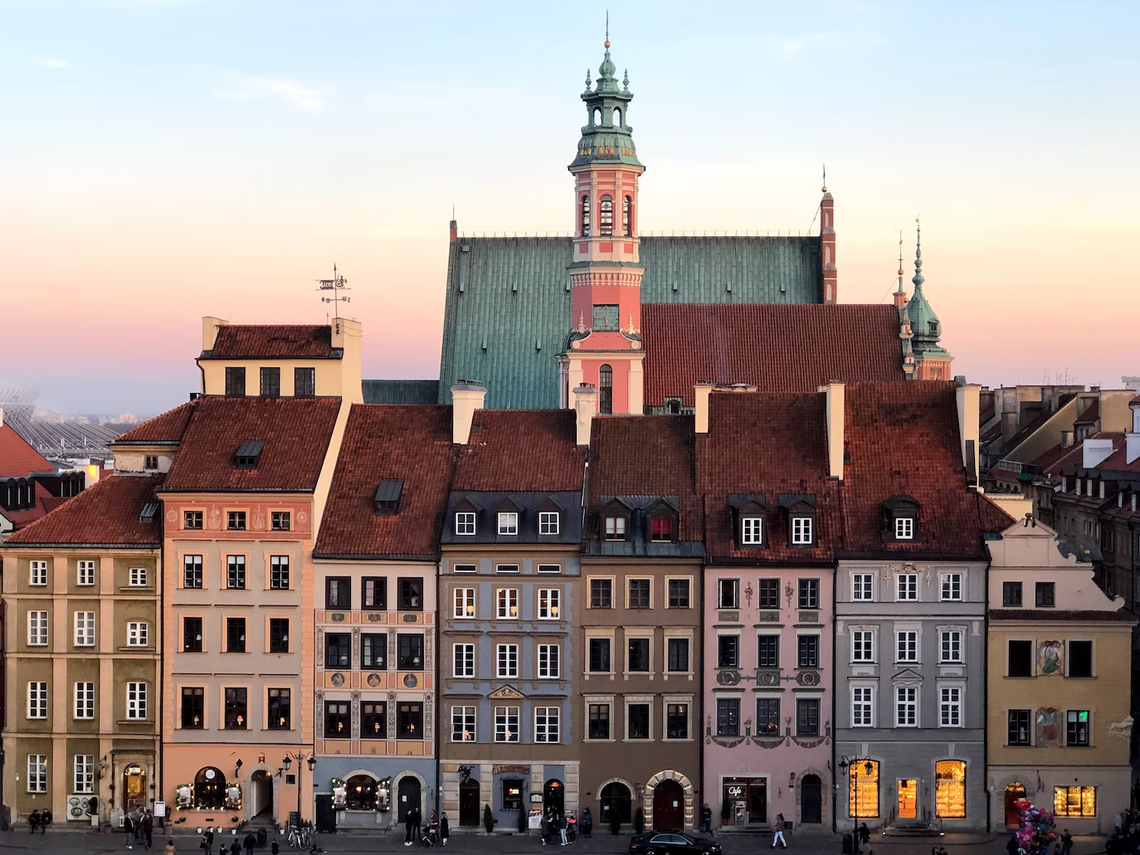Apply to a foreign university with confidence
- Properly fulfilled documents
- Perfect motivation letter
- Support from a personal mentor
- Offers from several universities
Article score: 4 out of 5 (1 review)
Universities in Poland occupy a worthy place in the EHEA system, combining modern standards and the oldest academic traditions.
Free consultation



Universities in Poland occupy a worthy place in the system of the European Higher Education Area (EHEA), combining modern standards and the oldest academic traditions. In the QS World University Rankings 2020, 16 Polish universities are represented, and 25 educational institutions are included in the top 300 of QS EECA University Rankings 2020 — a specialized ranking of the best universities in developing countries of Europe and Central Asia. Polish universities are alma mater for 18 Nobel laureates, including 4 winners of the Peace Prize. The distinguishing features of Polish universities are accessibility, affordability, a specialized focus and deep roots of university education.
Items 1-6 of 537
Advanced search| Type of studies | Age | Duration | Min. cost | Avg. cost | Min. language proficiency |
|---|---|---|---|---|---|
| Foundation | 16+ | 1 year | 1,130 USD/year | 2,260 USD/year | Polish B1 / TOEFL iBT 45 |
| Bachelor's | 18+ | 3-4 years | 1,356 USD/year | 2,486 USD/year | Polish B2 / TOEFL iBT 60-69 |
| Master's | 20+ | 2 years | 1,356 USD/year | 2,825 USD/year | Polish C1 / TOEFL iBT 90-100 |
| MBA | 18+ | 1-2 years | 9,040 USD/year | 13,560 USD/year | Polish C1 / TOEFL iBT 90-100 |
| Doctoral studies | 22+ | 4 years | 1,469 USD/year | 4,520 USD/year | Polish C1 / TOEFL iBT 90-100 |
Exact prices must be checked on the official websites of universities.
In Polish universities, admission is carried out 2 times a year: in October and in March. To enter universities one requires a notarized translation of the certificate/diploma that has passed the nostrification procedure with an apostille, and proof of English or Polish language proficiency (TOEFL or Polish language proficiency certificate at the level of B2-C1). Additionally, you may need a medical certificate confirming the ability of the applicant to study in the chosen profession, and motivation letter.
All higher education institutions in Poland can be divided into 3 types:
Colleges offer three-year training programs in the above specialties. It is classified as higher education for international comparisons, but is not such in a state law[6].
In addition, Polish universities are divided into the following types by specialization:
Universities, technical and economic universities attract the largest number of students (30%, 21% and 13% of the total number for the 2016-2017 academic year). The largest universities teach from 30,000 to 45,000 students[7]. These include the University of Warsaw, the Jagiellonian University in Krakow, the Adam Mickiewicz University in Poznan, the University of Wrocław, the University of Lodz and the Warsaw University of Technology.
In total, Poland has 390 universities, which are divided into state (34%) and private (66%). At the same time, 77% of all students in the country study at state educational institutions[7].
The main differences are:
Classes in Polish universities usually begin on October 1 and end in June. The academic year is divided into two semesters. In addition to the summer holidays, there are the following study breaks: 1-2 weeks for Christmas and Epiphany, winter (in the first half of February) and Easter holidays. The training is organized in the form of full-time (studia stacjonarne) or part-time (studia niestacjonarne) programs.
Student performance is assessed by the teacher of the relevant discipline. Examinations are oral and written. There is a rating scale from 2 to 5 (2 — unsatisfactory, 3 — satisfactory, 3.5 — satisfactory+, 4 — good, 4.5. — good+, 5 — very good, 5! — excellent).
Students have to write courseworks and graduation works. At the bachelor’s level texts are more abstract, and at master’s and doctorate they should be an original study. The writing process is monitored by an academic supervisor. In the middle of the school year, the department carries out pre-defense, which evaluates the work on the principle of pass/fail. And during the defense itself, the mark is set using a five-point system.
In addition, during the year, students must write a mid-semester essay, research or laboratory work, presentation, individual or group project, portfolio, test, as well as assess their own success and the success of classmates.
To obtain a degree at the end of the program, students are required to attend all disciplines, pass the relevant exams and earn the required number of credits through the ECTS system. Such an assessment system simplifies the process of nostrification of diplomas in all countries which joined the Bologna system of higher education.
In addition to the diploma, graduates receive a Diploma Supplement, developed in accordance with the requirements of the European Commission, Council of Europe and UNESCO. The Appendix provides more detailed information on the qualifications awarded, the content of the educational program and the results achieved.
There are few official associations of universities in Poland. A relatively new initiative was the creation of the Association of Polish Universities for Internationalization in 2017. The goal of the organization is the internationalization of Polish institutions of higher education and promoting them abroad. The member universities strive to develop student exchange and open more English-language programs that attract foreign students. In the future, APUI plans to attract all universities in Poland to the association, but so far only five of them are members:
Items 1-5 of 5
Advanced search| Name[9] | Faculties | No. of Students | Cost/year |
|---|---|---|---|
| University of Warsaw | 19 | 33000 | 3,277 USD |
| AGH University of Science and Technology in Kraków | 16 | 30000 | 7,345 USD |
| University of Wrocław | 16 | 30000 | 3,107 USD |
| Gdansk University | 10 | 23000 | 3,955 USD |
| University of Lodz | 9 | 19000 | 3,390 USD |
| Name[10] | Program | Duration | Cost |
|---|---|---|---|
| University of Warsaw, Faculty of Management |
| 15-20 months | 44900 PLN |
| Warsaw University of Technology (WUT) Business School |
| 12-24 months | 16500-29400 PLN |
| Institute for Business Development (IBD) Business School |
| 24 months | 28000-30000 PLN |
| 12-24 months | 14000-64500 PLN | |
| Warsaw School of Economics (SGH) |
| 18 months | 31000 PLN |
Citizens of Poland study for free. The same rights are enjoyed by foreign students of Polish-language programs at state universities who:
Foreigners who do not belong to any of these groups study in Poland for a fee. However, there are a large number of scholarships and grants that allow students from all over the world to partially or fully cover education / living expenses.
60+ countries
we work with
$1,000,000 saved
by students through scholarships
6,400 offers
our students got